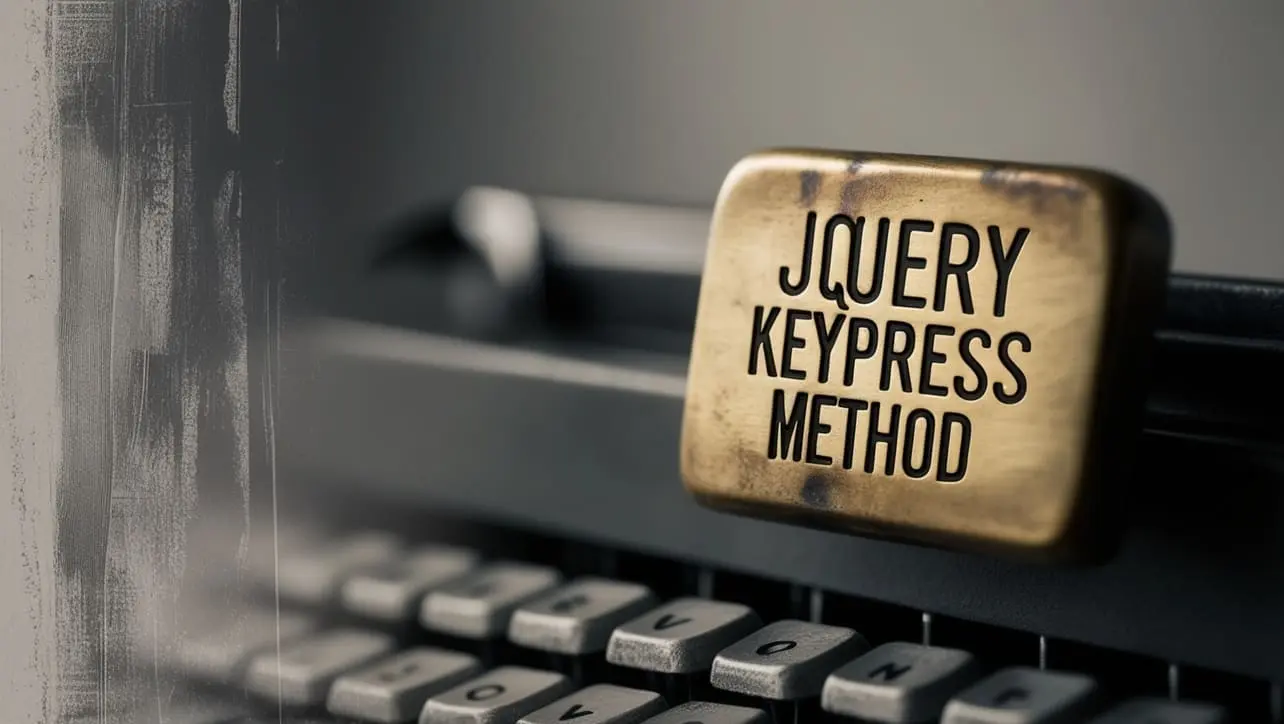
jQuery Topics
- jQuery Introduction
- jQuery Callbacks
- jQuery deferred
- jQuery selectors
- jQuery Ajax Events
- jQuery Ajax Methods
- jQuery Keyboard Events
- jQuery Keyboard Methods
- jQuery Form Events
- jQuery Form Methods
- jQuery Mouse Events
- jQuery Mouse Methods
- jQuery Event Properties
- jQuery Event Methods
- jQuery HTML
- jQuery CSS
- jQuery Fading
- jQuery Traversing
- jQuery Utilities
- jQuery Properties
jQuery .keypress() Method

Photo Credit to CodeToFun
🙋 Introduction
In web development, user interactions play a vital role in creating engaging and dynamic experiences. jQuery provides an array of methods to handle various user events, one of which is the .keypress() method. Understanding and effectively utilizing this method can greatly enhance your ability to respond to keyboard input in your web applications.
This guide explores the jQuery .keypress() method with practical examples to help you grasp its functionality and potential applications.
🧠 Understanding .keypress() Method
The .keypress() method in jQuery is used to bind an event handler to the "keypress" JavaScript event, which occurs when a key is pressed down and then released while the cursor is focused on an element. This method allows you to capture keyboard input and perform actions based on the keys pressed by the user.
💡 Syntax
The syntax for the .keypress() method is straightforward:
$(selector).keypress(function(event) {
// Event handler code here
});📝 Example
Capturing Keypress Events:
To capture keypress events on a specific element, you can use the
.keypress()method as follows:index.htmlCopied<input type="text" id="textInput">example.jsCopied$("#textInput").keypress(function(event) { console.log("Key pressed: " + event.key); });This code will log the key pressed by the user in the console whenever a key is pressed while the focus is on the text input field.
Performing Actions Based on Key Pressed:
You can perform different actions based on the key pressed by the user. For instance, let's trigger an alert when the Enter key is pressed:
index.htmlCopied<input type="text" id="textInput">example.jsCopied$("#textInput").keypress(function(event) { if (event.which === 13) { alert("Enter key pressed!"); } });In this example, the alert will be triggered only when the Enter key (key code 13) is pressed in the text input field.
Preventing Default Action:
You can prevent the default action associated with a keypress event using the .preventDefault() method. For example, to prevent the default action of the Enter key in a form:
index.htmlCopied<form id="myForm"> <input type="text"> </form>example.jsCopied$("#myForm").keypress(function(event) { if (event.which === 13) { event.preventDefault(); } });This code prevents the form from being submitted when the Enter key is pressed within the text input field.
Handling Special Characters:
Be aware that the
.keypress()method may not capture certain special characters or non-character keys (e.g., arrow keys, function keys). In such cases, consider using other event methods like .keydown() or .keyup().
🎉 Conclusion
The jQuery .keypress() method provides a convenient way to capture keyboard input and respond to user actions in web applications. Whether you need to capture specific keypress events, perform actions based on key combinations, or prevent default behaviors, this method offers a versatile solution.
By mastering its usage and understanding its nuances, you can create more interactive and user-friendly experiences for your website visitors.
👨💻 Join our Community:
Author

For over eight years, I worked as a full-stack web developer. Now, I have chosen my profession as a full-time blogger at codetofun.com.
Buy me a coffee to make codetofun.com free for everyone.
Buy me a Coffee












If you have any doubts regarding this article (jQuery .keypress() Method), please comment here. I will help you immediately.